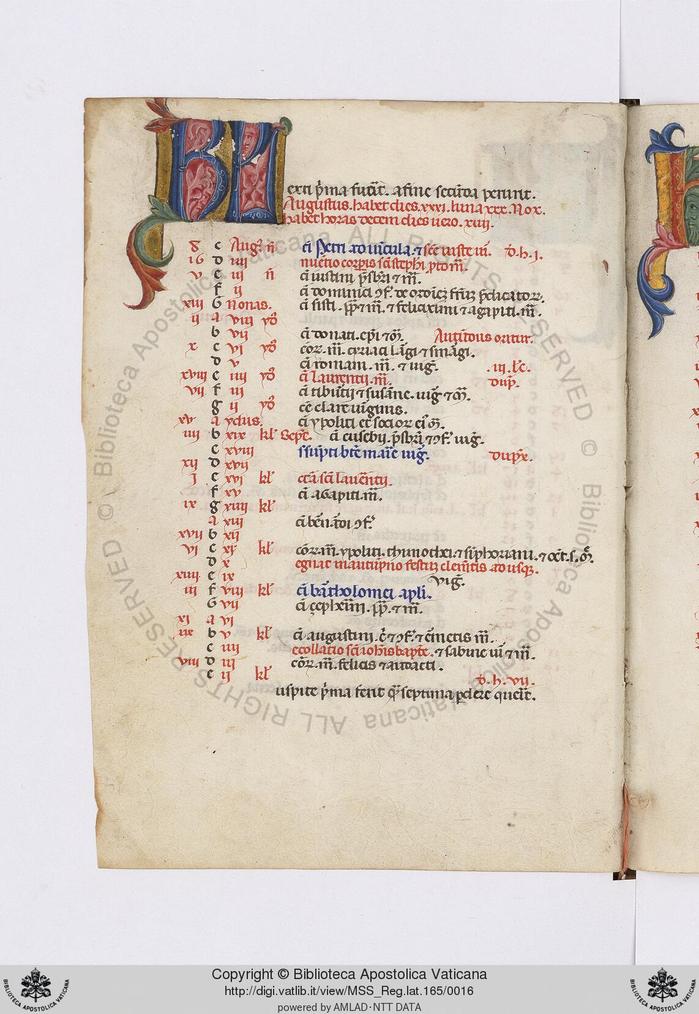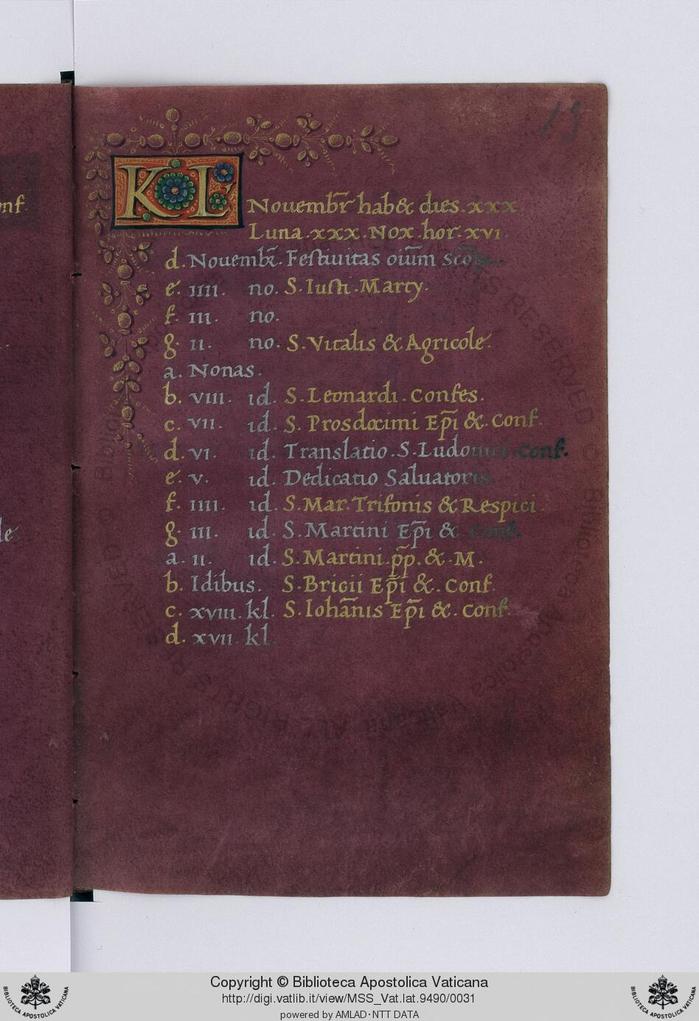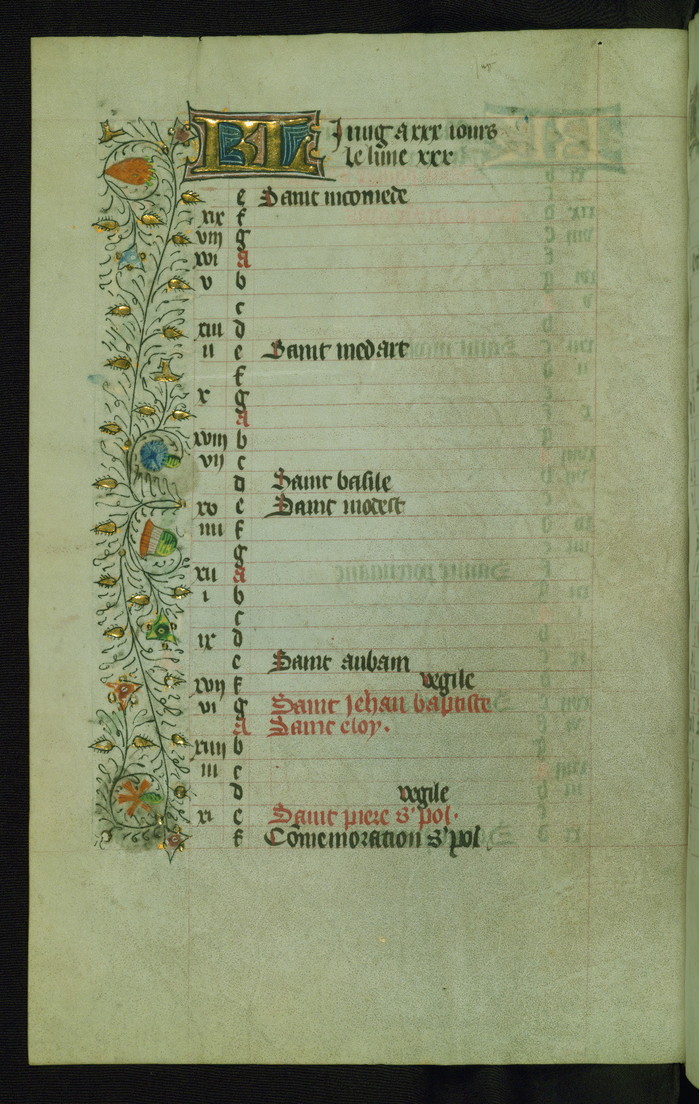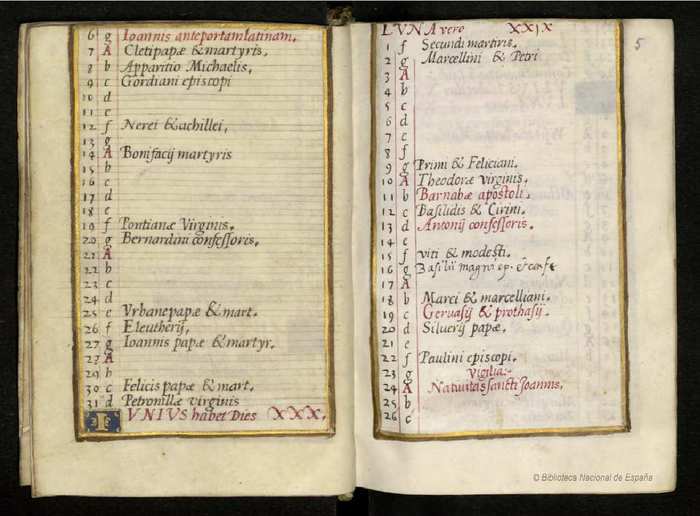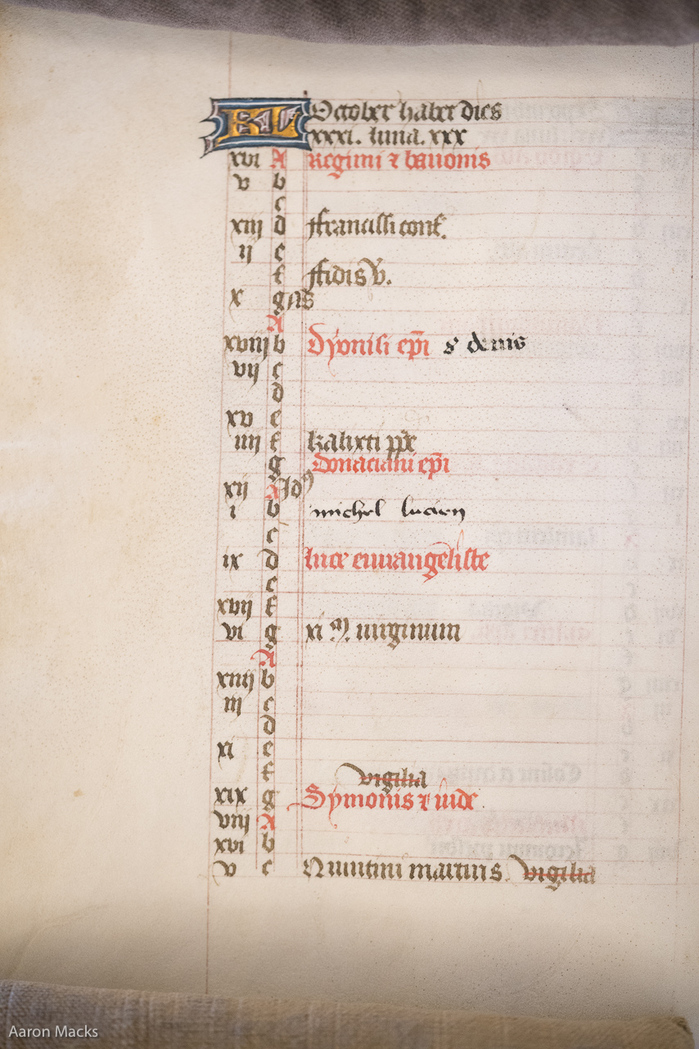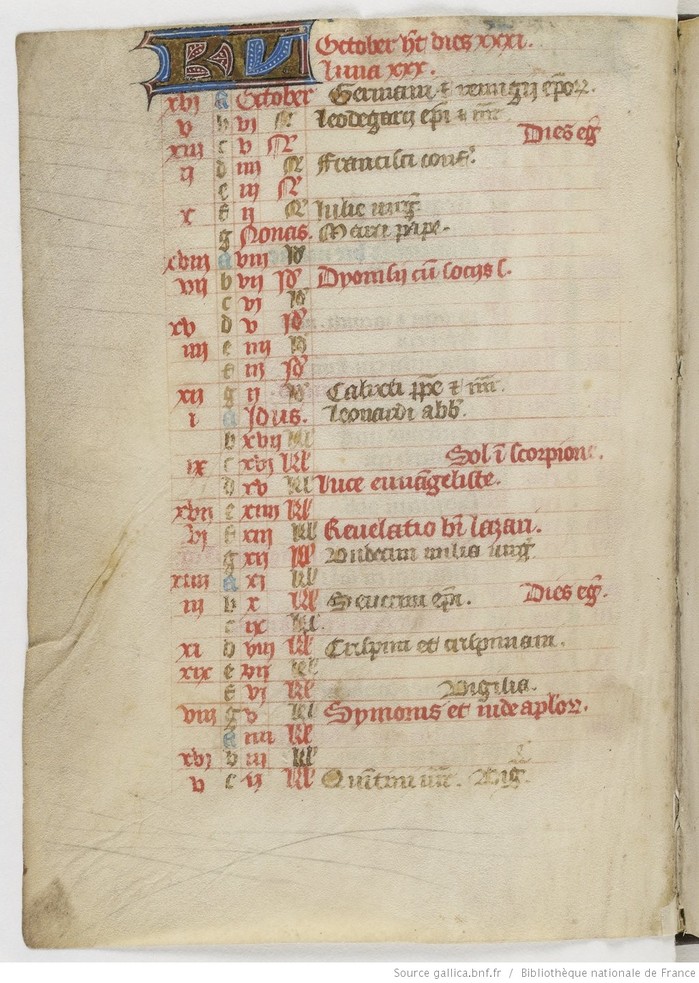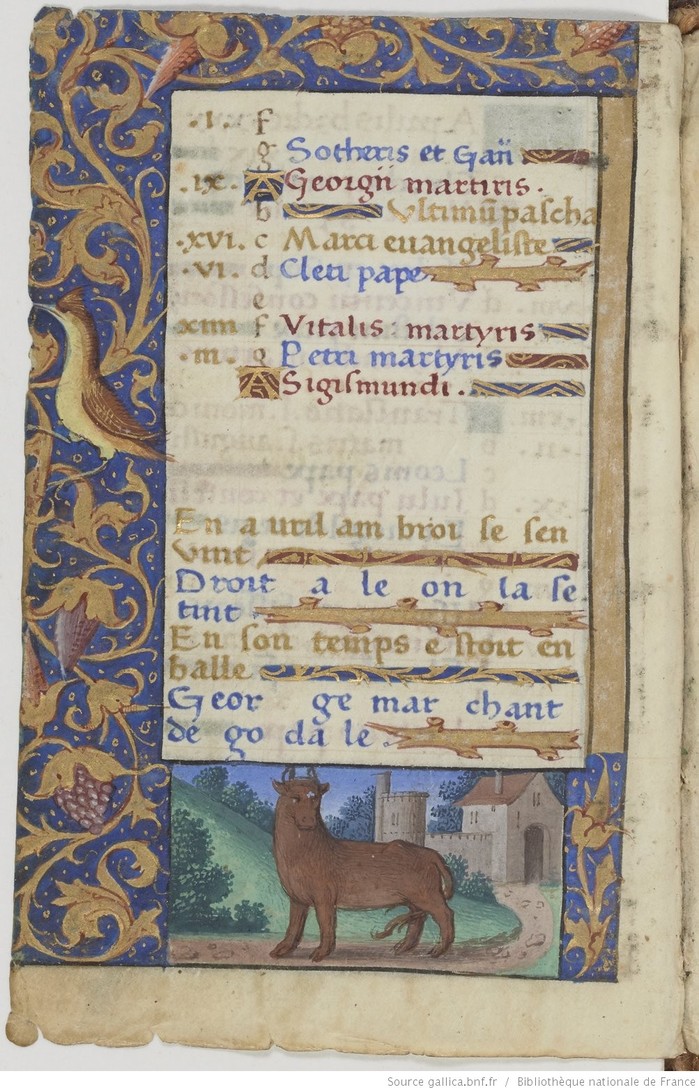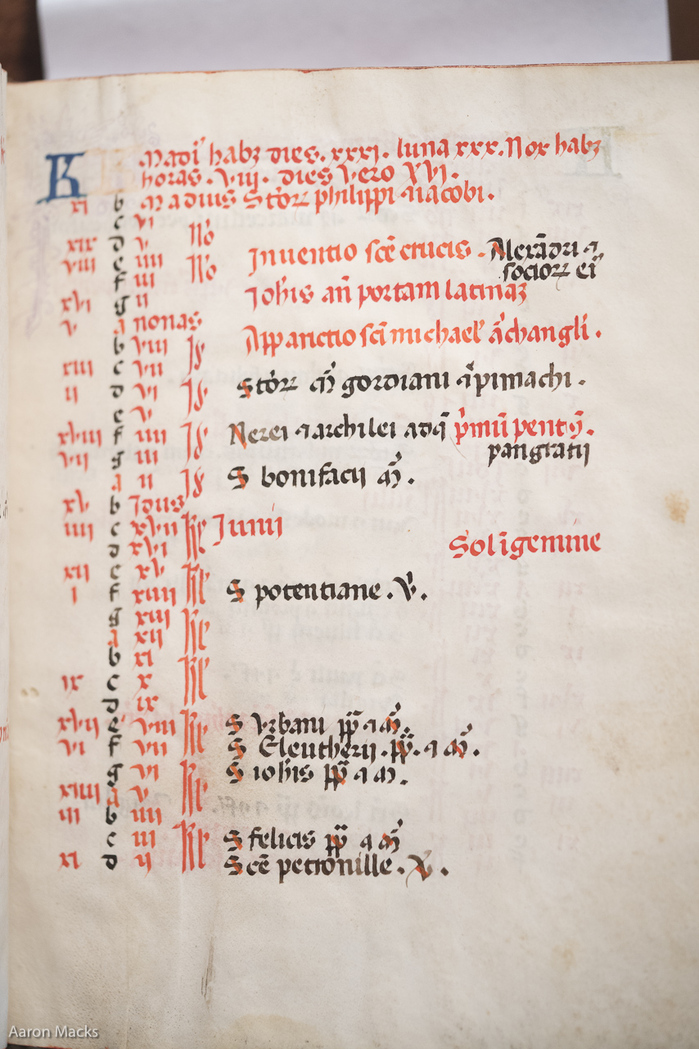As mentioned, most of the usual updates are going through Twitter, @cokldb, but Chigi D.V.71 from the Biblioteca Apostolica Vaticana is far to complex to explain in 280 characters. First some numbers, this is the 18th MS from the BAV, and it was made in Toulouse, though liturgical Use of Rome, circa 1335-42. After the January and February calendar pages there are Latin passages, written in red, on calculating the date of Easter.
The calendar is unusually large in several measures. Each entry takes 2 ruled lines, with the dominical letter, golden number and roman number on the first line and the roman part stretched across both, sometimes even three. The stretched Roman part is not unusual, but the double-line entry is unique. This layout means that each month takes 2 full folios, 4 sides, leading to a calendar 24 pages long. The decoration is rather sparse, but standard mid 14th Century, with a border and a few leaves on the first face of the month and nothing on the other three. This layout allowed the scribe to load the calendar with saints, there are approximately 480 distinct feasts, with 9 dates carrying three. August 22 has four distinct feasts: the Octave of the Assumption(469), and three distinct martyrs, Thimothy(478), Hippolytus(471), and Symphorian(477). For context, a fully populated calendar has between 365 and 380 saints, and the previous MS with the densest calendar hit 401. Not surprisingly, this calendar has a number of hapax saints, 30 new saints and 48 unidentified ones.
The calendar decorations are less unusual, rod borders with sparse foliage, some of in intruding into the text block. There is no KL to start the page, in its place there's a small miniature of the labor of the month, backed with burnished gold. To ornament the dominical "A" there's some small amount of red or blue penwork.
Note that this MS makes approximately 250 devotional calendars added to the DB since December 2015.
(DB Id: 381)
